Tuesday, November 11th, 2014
Where do you go to stay smart in the kids interactive industry? What conferences keep you on top of your craft, while also helping you grow your network? What events are vital to attend to learn the latest trends? There are so many conferences these days which ones are right for you? Look no further, here’s a compiled conference list to get you started! It covers areas of the children’s interactive media business like toys, eBooks, video games, children’s television, apps, play, research, consumer products, and more. The list below covers most of the big US and international shows in 2015, and just a few important smaller events.
You can download a PDF copy of this list here. Let us know what you think. Which events do you attend? What speakers draw you to an event? If there’s an event that’s not on this list, and you think it’s important, please let us know in the comments below.
| # | Conference w link | Location | Date(s) | Focus |
|---|---|---|---|---|
| 1 | Consumer Electronics Show (CES) | Las Vegas, NV | 1/6-9/15 | Hardware, tech |
| 2 | Kids@Play | Las Vegas, NV | 1/7/15 | KidTech |
| 3 | Hong Kong Toys & Games Fair | Hong Kong | 1/12-15/15 | Toys |
| 4 | Digital Book World | New York, NY | 1/13-15/15 | eBooks |
| 5 | FETC | Orlando, FL | 1/20-23/15 | Ed tech |
| 6 | PAXsouth | San Antonio, TX | 1/23-25/15 | Gaming |
| 7 | Nuremburg Toy Fair | Nuremburg | 1/28-2/2/15 | Toys |
| 8 | NY Toy Fair | New York, NY | 2/14-17/15 | Toys |
| 9 | Digital Kids Conference | New York, NY | 2/15-17/15 | KidTech |
| 10 | Kidscreen Summit | Miami, FL | 2/23-26/15 | Broadcast, Children’s TV |
| 11 | iKids | Miami, FL | 2/26/15 | KidTech |
| 12 | Game Developers Conference (GDC) | San Fran, CA | 3/2-6/15 | Gaming |
| 13 | PAXeast | Boston, MA | 3/6-8/15 | Gaming |
| 14 | SXSWedu | Austin, TX | 3/9-12 2015 | Education |
| 15 | SXSW Gaming Expo | Austin, TX | 3/13-16/15 | Gaming |
| 16 | SXSW Interactive | Austin, TX | 3/13-17/15 | Interactive |
| 17 | SXSW Music | Austin, TX | 3/17-22/15 | Music |
| 18 | Society for Research in Child Development (SRCD) | Philadelphia, PA | 3/19-21/15 | Research |
| 19 | Sandbox Summit | Cambridge, MA | 3/22-24/15 | Play |
| 20 | Dust or Magic Masterclass | Bologna | 3/25/15 | eBooks |
| 21 | Bologna Children’s Book Faire | Bologna | 3/30-4/2/15 | Books |
| 22 | Early Education & Technology for Children (EETC) | Salt Lake City, UT | 3/15 | Early ed, edtech |
| 23 | London Book Fair | London, UK | 4/14-16/15 | Books |
| 24 | Games for Change | New York, NY | 4/21-23/15 | Serious games |
| 25 | Dust or Magic eBook Retreat | Honesdale, PA | 4/15 | eBooks |
| 26 | PlayCon | Scottsdale, AZ | 4/29-5/1/15 | Toys |
| 27 | Software & Information Industry Association (SIIA) | San Fran, CA | 5/3-5/15 | Ed tech |
| 28 | Maker Faire Bay Area | San Mateo, CA | 5/16-17/15 | Maker |
| 29 | Book Expo America (BEA) | New York, NY | 5/27-29/15 | eBooks |
| 30 | AppCamp | Pacific Grove, CA | 5/30-6/2/15 | Children’s Apps |
| 31 | “Content in Context (CIC, AAP) | Wash DC | 6/1-3/15 | Ed publishing |
| 32 | NAEYC Professional Development conference | New Orleans, LA | 6/7-10/15 | Early ed |
| 33 | Licensing Expo | Las Vegas, NV | 6/9-11/15 | Licensing |
| 34 | Digital Media & Learning (DML) | LA, CA | 6/11-13/15 | Ed tech |
| 35 | E3 | LA, CA | 6/16-18/15 | Gaming |
| 36 | Interaction Design & Children (IDC) | Medford, MA | 6/21-24/15 | Research |
| 37 | International Society for Technology in Education (ISTE) | Philadelphia, PA | 6/28-7/1/15 | Ed tech |
| 38 | Children’s Media Conference (Professional) | Sheffield, UK | 7/1-3/15 | Broadcast |
| 39 | Playful Learning Summit | Maddison, WI | 7/7/15 | Serious games |
| 40 | Games, Learning & Society (GLS) | Maddison, WI | 7/8-10/15 | Serious games |
| 41 | ComicCom | San Diego, CA | 7/9-12/15 | Entertainment |
| 42 | International Reading Association (IRA) | St. Louis, MO | 7/17-20/15 | Education, reading |
| 43 | Serious Play | LA, CA | 7/15 | Serious games |
| 44 | Casual Connect | San Fran, CA | 8/11-13/15 | Gaming |
| 45 | Burning Man | Black Rock Desert, NV | 8/29-9/5/15 | Art, mind |
| 46 | Digital Kids Summit | San Fran, CA | 9/15 | KidTech |
| 47 | World Congress of Play | San Fran, CA | 9/15 | Toys |
| 48 | Maker Faire New York | New York, NY | 9/26-27/15 | Maker |
| 49 | MIP Jr. | Cannes, France | 10/2-4/15 | Children’s television |
| 50 | MDR EdNet | Atlanta, GA | 10/4-6/15 | Ed tech |
| 51 | MIPcom | Cannes, France | 10/5-8/15 | Television |
| 52 | Fall Toy Preview | Dallas, TX | 10/6-8/15 | Toys |
| 53 | Meaningful Play | East Lansing, MI | 10/15 | Serious games |
| 54 | CineKid | Amsterdam | ~10/18-22/15 | Interactive |
| 55 | Dust or Magic | Lambertville, NJ | 11/1-3/15 | Kidtech, children’s apps |
| 56 | NAEYC Annual Conference | TBA | 11/15 | Early ed |
| 57 | ChiTAG | Chicago, IL | 11/20-23/15 | Toys |
| 58 | SIIA Education Business Forum | New York, NY | 12/15 | Ed tech |
| 59 | Star Wars Episode VII release | US | 12/18/15 | Entertainment |
NOTE: Items highlighted in red indicate specifics about an event that have yet to be announced as of 11/10/2014.


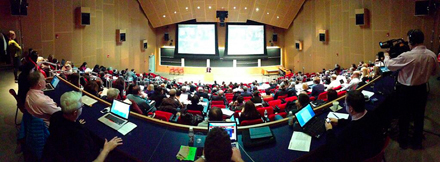

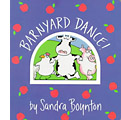 A delightful rhyming story of barnyard friends that go to a dance. The rhythm and meter of this story will keep you reciting sections from this book for days on end. Another great find for our family was discovering that there’s a Sandra Boynton CD available with this book’s lyrics set to song.
A delightful rhyming story of barnyard friends that go to a dance. The rhythm and meter of this story will keep you reciting sections from this book for days on end. Another great find for our family was discovering that there’s a Sandra Boynton CD available with this book’s lyrics set to song.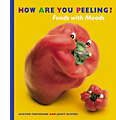 Elffers is a fantastic photographer with a talent for bringing personality and emotion out of common everyday fruits and vegetables. Each page is filled with wonderful facial expressions from his creations. Light copy, lots of unique and interesting faces to enjoy.
Elffers is a fantastic photographer with a talent for bringing personality and emotion out of common everyday fruits and vegetables. Each page is filled with wonderful facial expressions from his creations. Light copy, lots of unique and interesting faces to enjoy. Farmer Brown runs a no-nonsense farm, but things change once the cows who live there acquire an old typewriter and learn how to express there wishes on short notes. When Farmer Brown doesn’t comply with the cows requests, the cows decide they will go on strike. Fun, fun. fun!
Farmer Brown runs a no-nonsense farm, but things change once the cows who live there acquire an old typewriter and learn how to express there wishes on short notes. When Farmer Brown doesn’t comply with the cows requests, the cows decide they will go on strike. Fun, fun. fun!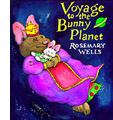 There are so many great books written by Rosemary Wells that it’s hard to pick even just a few, but the Bunny Planet books (a small collection of three books sold together as a set) have a wonderful Zen-like story quality to them. Ms. Wells explores the idea of a perfect world that lives inside our heads when things outside don’t go quite as well as we had planned.
There are so many great books written by Rosemary Wells that it’s hard to pick even just a few, but the Bunny Planet books (a small collection of three books sold together as a set) have a wonderful Zen-like story quality to them. Ms. Wells explores the idea of a perfect world that lives inside our heads when things outside don’t go quite as well as we had planned.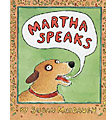 The story of a family dog named Martha who likes to eat alphabet soup. The interesting twist in the story is that when Martha eats the soup, the letters go up to her brain instead of down to her tummy! There are many Martha Speaks books available and the first is the one that sets up the story for the entire series.
The story of a family dog named Martha who likes to eat alphabet soup. The interesting twist in the story is that when Martha eats the soup, the letters go up to her brain instead of down to her tummy! There are many Martha Speaks books available and the first is the one that sets up the story for the entire series.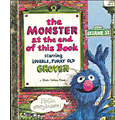 I think everyone in the entire world loves Grover, the fuzzy blue character from Sesame Street. In this story, Grover asks, even begs, the reader not to turn the pages of this book because he’s afraid there’s a monster that might scare him on the very next page. You will read this one again and again with your young child.
I think everyone in the entire world loves Grover, the fuzzy blue character from Sesame Street. In this story, Grover asks, even begs, the reader not to turn the pages of this book because he’s afraid there’s a monster that might scare him on the very next page. You will read this one again and again with your young child.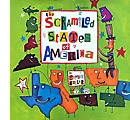 What would happen if each state in the nation could move to a new location? This book explores the fun and mayhem that ensues when each state moves to where they think they would really enjoy living. A funny story for children who are learning to memorize the US states.
What would happen if each state in the nation could move to a new location? This book explores the fun and mayhem that ensues when each state moves to where they think they would really enjoy living. A funny story for children who are learning to memorize the US states.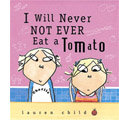 This is the first book that began the popular Charlie and Lola series of books and television shows. Lola is a very finicky eater. Her older brother Charlie presents familiar foods with funny names and stories that make Lola curious about what she might be missing. Just where do peas and fish sticks come from? And what sort of story would you tell to make eating these items more appealing?
This is the first book that began the popular Charlie and Lola series of books and television shows. Lola is a very finicky eater. Her older brother Charlie presents familiar foods with funny names and stories that make Lola curious about what she might be missing. Just where do peas and fish sticks come from? And what sort of story would you tell to make eating these items more appealing? The Owly book series are a charming collection of graphic novels starring an owl and his woodland friends. Together they go on many adventures, making new friends and helping other animals and friendly insects along the way. These books require a parent to imagine and invent the dialog alongside the visuals which I believe fosters an even closer story telling experience between reader and child.
The Owly book series are a charming collection of graphic novels starring an owl and his woodland friends. Together they go on many adventures, making new friends and helping other animals and friendly insects along the way. These books require a parent to imagine and invent the dialog alongside the visuals which I believe fosters an even closer story telling experience between reader and child.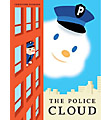 The graphic design approach to this story is just beautiful. Christoph Nieman is an artist for the New Yorker magazine and now shares his visual talents as a children’s book author. Nieman tells a captivating story about a cloud that wishes to become a policeman.
The graphic design approach to this story is just beautiful. Christoph Nieman is an artist for the New Yorker magazine and now shares his visual talents as a children’s book author. Nieman tells a captivating story about a cloud that wishes to become a policeman.